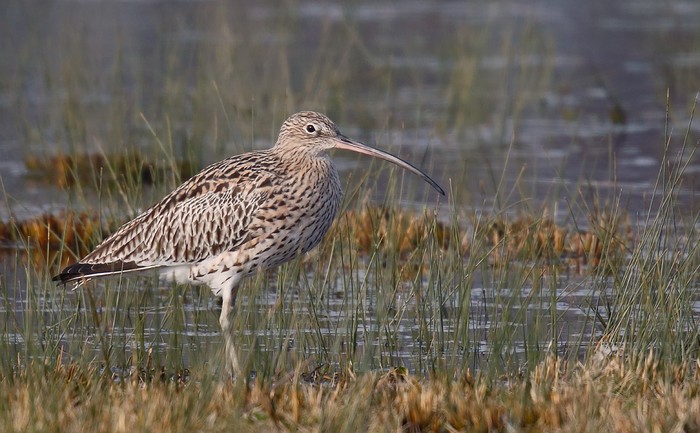£156k award to protect Scotland's Curlews
Scottish Natural Heritage (SNH) has confirmed that a project to help one of Scotland’s most threatened breeding bird species will be a recipient of the Scottish Government's Biodiversity Challenge Fund.

Curlews in Crisis Scotland has been awarded more than £156k to help increase suitable breeding areas and reduce predation for Europe’s largest wader and one of our most distinctive birds.
The project, which links to other work in Scotland aiming to halt the decline of curlew populations, will focus on two special nature sites, in the Highlands and near Muirkirk in East Ayrshire.
Scotland is now home to an estimated 15% of the world’s breeding population of curlews, which has been severely impacted by changes to farming practices and intensification. Farmers in the project area at Airds Moss Site of Special Scientific Interest (SSSI) have been working with SNH and RSPB Scotland to help biodiversity for more than a decade. Curlews in Crisis will continue to work closely with farmers to increase and manage quality habitat for the waders, through rush control and vegetation thinning.
Anne McCall, Director of with RSPB Scotland, said: “It’s fantastic news that SNH has awarded funding to Curlews in Crisis. This unmistakable bird with its long down-curved bill desperately needs help. Our project will bring immediate short term benefits for curlews in Caithness and Ayrshire and allow us to learn more about the causes of the species’ rapid decline. Farmers at the Ayrshire site have done excellent work for nature in recent years and we’re really looking forward to continuing this partnership.”
The Biodiversity Challenge Fund specifically encourages applicants with innovative projects that improve biodiversity and address the impact of climate change, by increasing the resilience of our most at-risk habitats and species and creating large areas of brand new habitat.
Curlews in Crisis is one of 14 successful projects across Scotland to share the £1.8 million committed by the Biodiversity Challenge Fund in the first year of its two-year period. The projects will take practical steps to improve natural habitats, safeguard plant and animal species and improve biodiversity.
The announcement comes as additional funding has now been made available by the Scottish Government for further, ambitious ideas to improve habitats, safeguard species and tackle the causes of biodiversity loss, as the Biodiversity Challenge Fund opens its latest round for fresh applications. Scottish Government announced a £2m increase in its latest Programme for Government. The Biodiversity Challenge Fund adds to the many millions of pounds of Scottish Government funding delivered through the Scottish Rural Development Programme and other sources to support biodiversity and help to deliver Scotland’s Biodiversity Strategy.
Environment Secretary Roseanna Cunningham said: “I am delighted that, through the Biodiversity Challenge Fund, the Scottish Government and SNH can support these fantastic projects across the country to safeguard some of our most vulnerable species and habitats, and protect them from invasive species. Their success will play a crucial role in our efforts to improve nature and help Scotland meet its international biodiversity commitments.”
SNH Chief Executive, Francesca Osowska, said: “People know that climate change is a big issue but not as many know that biodiversity loss is also a global and generational threat to human well-being.
8 January 2020
Source: Scottish Natural Heritage
Share this story




